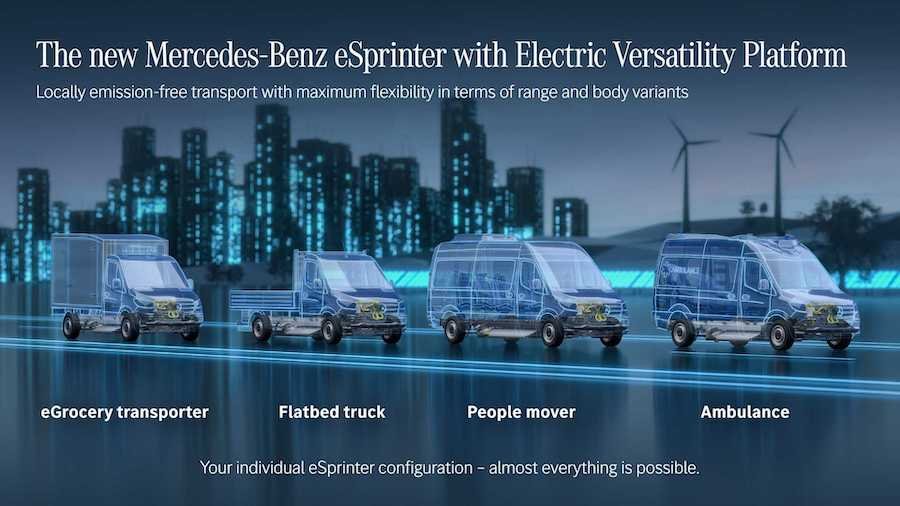Next-Gen Mercedes eSprinter Gains Versatility With New Platform

The platform comprises three modules – a rear drive axle, an underfloor high-voltage battery, and a front module for high-voltage components. The platform, living up to its name, looks versatile, with Mercedes showing the platform underpinning an ambulance, a passenger van, a cargo van, a flat-bed truck, and an eGrocery transport.
Mercedes' announcement arrives about a month after Ford revealed the 2022 E-Transit, the Blue Oval's all-electric cargo van. Ford said it would aim to offer the EV with 266 horsepower (198 kilowatts) and 317 pound-feet (430 Newton-meters) of torque. The estimated range for the Ford is 126 miles (203 kilometers) from its useable 67-kilowatt-hour battery capacity. The current-gen eSprinter offers either a 55- or 41-kWh battery offering up to 104.4 miles (168 km). If Mercedes is bringing it to the US, we expect an increase in the next-gen model's battery capacity.
It'll be interesting to see the largest battery available for the next-gen eSprinter. Ford's one-size-fits-all solution could limit its appeal – it starts below $45,000, according to the company. There's also a good chance Mercedes might not offer every configuration of the van here, either. It's an untested market that is ripe for electrification, though there may be room for both. The company didn’t say when we’d see the new van.





Related News
